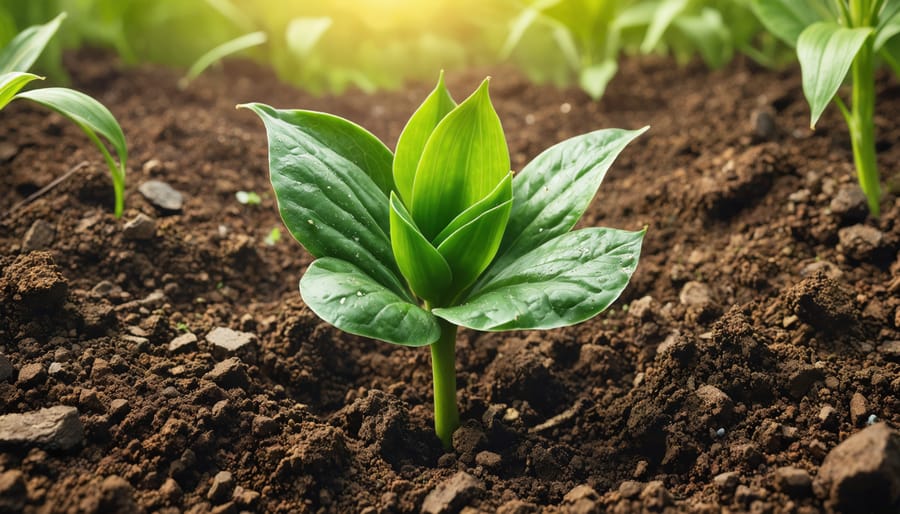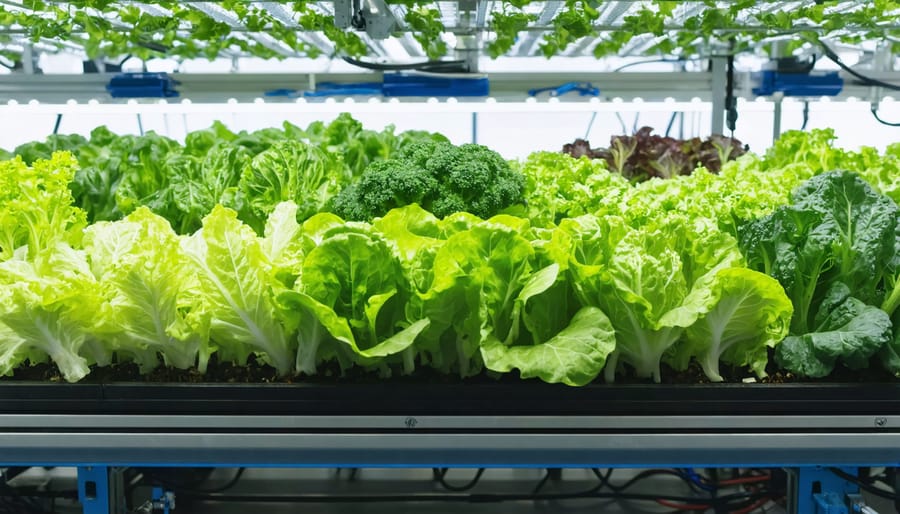Despite their similar names, garden soil and potting soil serve distinctly different purposes in the world of gardening. While both support plant life, these two soil types are specifically engineered for unique growing environments. Garden soil, dense and rich in natural organisms, thrives in outdoor beds where roots can spread freely. However, when growing plants in containers, potting soil’s lighter, sterilized composition prevents compaction and provides crucial drainage that container plants need to flourish. Understanding these fundamental differences can mean the difference between thriving plants and disappointing results, especially for indoor gardening projects or patio containers. Whether you’re starting a windowsill herb garden or filling raised beds, choosing the right soil type will set your plants up for success from the very beginning.
The Critical Differences Between Garden Soil and Potting Soil
Composition and Structure
Gardening soil and potting soil differ significantly in their composition and physical structure. Garden soil typically contains a mix of topsoil, organic matter, and native minerals from your local environment. It’s usually denser and heavier, with varying particle sizes that create a more compact growing medium.
Potting soil, on the other hand, is specially formulated with lightweight materials like peat moss, vermiculite, and perlite. These ingredients create plenty of air pockets, ensuring proper drainage and root development in contained environments. You’ll often find bark fines or coco coir added to improve moisture retention while maintaining that essential light, fluffy texture.
While garden soil naturally contains beneficial microorganisms and nutrients, potting soil is typically sterilized to prevent diseases and often enriched with controlled-release fertilizers. The texture of potting soil remains consistent throughout, unlike garden soil which can become compacted over time, especially in containers.
Both types also differ in their pH levels and nutrient content, with potting soil usually being carefully balanced to suit a wide range of plants. Garden soil’s composition can vary greatly depending on your local environment and previous growing conditions.
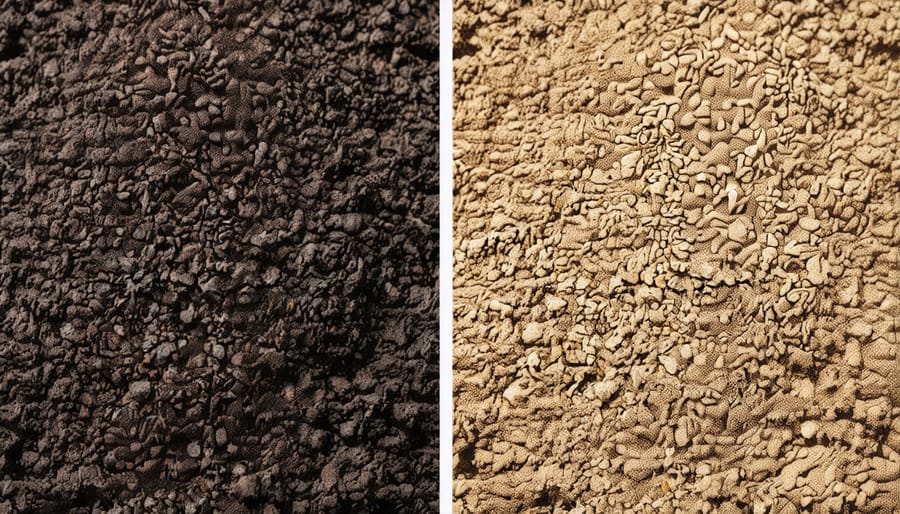
Drainage and Aeration Properties
One of the biggest differences between gardening soil and potting soil lies in how they handle water and air flow. Gardening soil, being denser and more compact, tends to retain water longer but can become waterlogged, potentially leading to root rot in containers. Its tight structure also means less air space between particles, which can limit root growth and oxygen availability.
In contrast, potting soil is specifically engineered for container growing, with a lighter, fluffier texture that promotes both drainage and aeration. It typically contains materials like perlite, vermiculite, or pine bark, which create tiny air pockets throughout the mix. These pockets allow excess water to drain freely while ensuring roots have access to the oxygen they need for healthy growth.
Think of it this way: garden soil is like a dense sponge that holds onto water, while potting soil is more like a coffee filter that allows water to flow through while retaining just enough moisture. This is why potting soil is the better choice for container plants, as it helps prevent the common problems of overwatering and poor root development that often occur when using garden soil in pots.
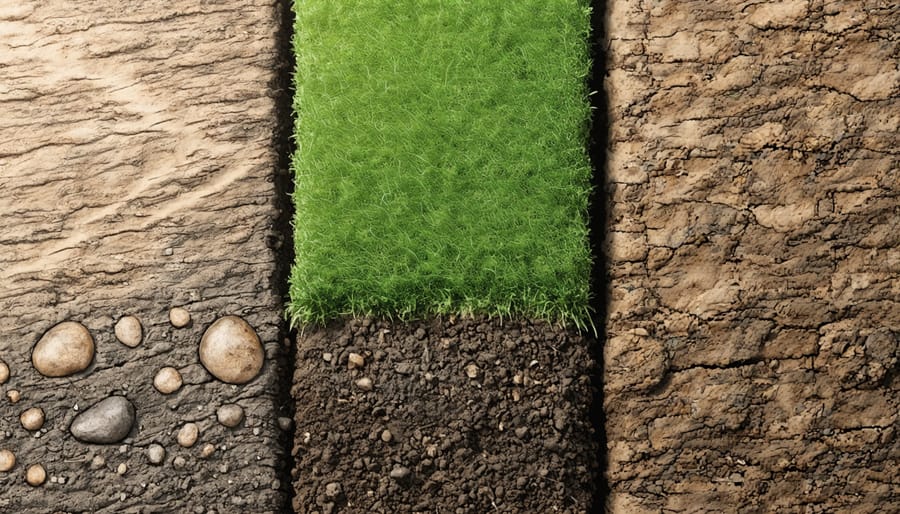
Why Garden Soil Falls Short in Containers
Compaction Issues
One of the biggest challenges when using garden soil in containers is compaction. Unlike potting soil, garden soil naturally becomes dense and tightly packed over time, especially when confined in a pot. This happens because garden soil contains higher amounts of clay and fine particles that bind together when watered, creating a compact mass that’s problematic for container plants.
When soil becomes compacted, it restricts root growth and makes it difficult for plants to access water and nutrients. You might notice water pooling on the surface instead of draining properly, and your plants may show signs of stress, like yellowing leaves or stunted growth. Think of it like trying to push your fingers through packed sand versus loose beach sand – roots face the same challenge!
The confined space of containers makes this issue even worse. Without natural soil organisms and freeze-thaw cycles that help break up soil in gardens, container plants can literally become root-bound in dense garden soil. This is why specially formulated potting mixes, with their lighter texture and better drainage properties, are the preferred choice for container gardening.
Nutrient Availability Challenges
When garden soil is used in containers, it often struggles to provide consistent nutrition to plants. Unlike potting soil, which is specifically formulated with balanced nutrients, garden soil can experience significant nutrient fluctuations over time. This becomes particularly problematic in nutrient-deficient soil conditions, where plants may show signs of yellowing leaves, stunted growth, or poor flowering.
Container plants require readily available nutrients because their root systems are confined to a limited space. Garden soil typically releases nutrients slowly and unevenly, making it challenging for container plants to thrive. Additionally, frequent watering in containers can wash away essential minerals faster than they would be depleted in an in-ground garden.
To combat these challenges, many gardeners find themselves needing to supplement with fertilizers more frequently when using garden soil in containers. This not only adds to maintenance time but can also lead to inconsistent plant growth. The natural decomposition process that enriches garden soil in outdoor beds simply doesn’t function as effectively within the confined space of a container, leaving plants vulnerable to deficiencies that can affect their overall health and productivity.
Making the Right Choice for Nutrient-Deficient Plants
Selecting the Right Potting Mix
Choosing the right potting mix is crucial for container gardening success, and it largely depends on what you’re planning to grow. For moisture-loving plants like ferns and peace lilies, look for potting mixes with added peat moss or coco coir to retain moisture. If you’re growing succulents or cacti, opt for a fast-draining mix with added perlite or sand.
Indoor plants generally thrive in lightweight mixes that provide good aeration while maintaining adequate moisture. For vegetables and herbs, choose nutrient-rich potting mixes specifically formulated for edible plants, which often contain organic matter and slow-release fertilizers.
Consider the pot size too – larger containers may benefit from moisture-control formulas to prevent frequent watering, while smaller pots might need lighter mixes to prevent waterlogging. Always check the mix’s texture before buying; it should feel loose and fluffy, not dense or compacted.
For seed starting, use a fine-textured sterile mix to prevent damping-off disease. When repotting established plants, you might want a coarser mix with added bark for better root development. Remember, while premium potting mixes might cost more initially, they’re worth the investment for healthier, more vibrant plants.
Enriching Your Potting Soil
While potting soil comes pre-mixed with nutrients, you can enhance its fertility to give your plants an extra boost. One of the easiest ways to enrich your potting soil is by adding compost, which introduces beneficial microorganisms and slow-release nutrients. Mix in about one part compost to three parts potting soil for optimal results.
Worm castings are another excellent addition, providing nutrients and improving soil structure. Just a handful per gallon of potting soil can make a significant difference in plant growth. For an organic boost, consider incorporating well-aged manure or bone meal, which are particularly rich in phosphorus and great for flowering plants.
Don’t overlook the power of mineral amendments. A sprinkle of kelp meal adds micronutrients and growth hormones, while crushed eggshells provide calcium that tomatoes and peppers love. For container plants that stay in the same pot for extended periods, you might want to add a slow-release organic fertilizer to ensure consistent nutrition throughout the growing season.
Remember to test your soil’s pH before adding amendments, as this can affect nutrient availability. Most plants prefer a slightly acidic to neutral pH (6.0-7.0). If needed, adjust with lime to raise pH or sulfur to lower it. Always mix amendments thoroughly and water well after enriching your potting soil to help distribute nutrients evenly.
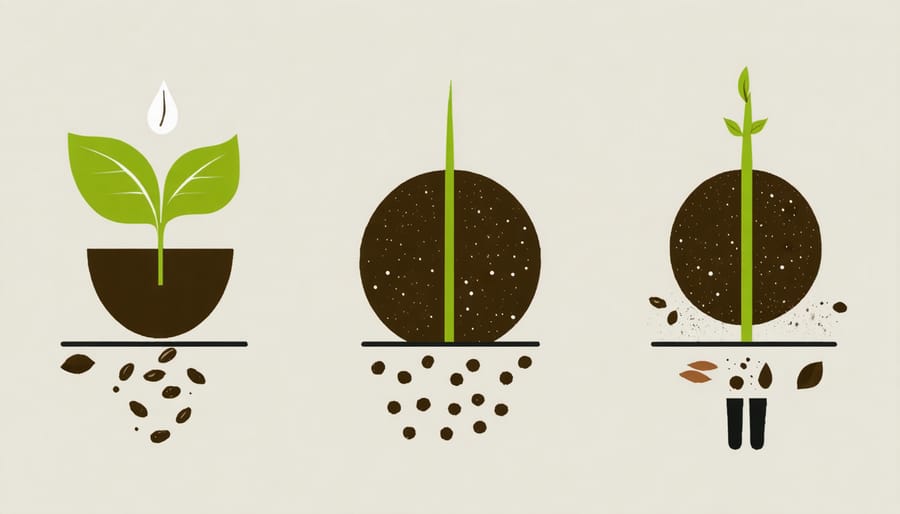
When to Use Each Soil Type
Knowing when to use each type of soil can make the difference between thriving plants and disappointing results. Let’s break down the ideal scenarios for both soil types to help you make the right choice for your garden.
Garden soil is your go-to choice for outdoor planting beds, raised gardens, and in-ground projects. It’s perfect when you’re planning to grow vegetables, establish flower beds, or plant trees and shrubs directly in the ground. The natural density and mineral content of garden soil helps plants develop strong root systems and provides stability for larger plants.
Potting soil, on the other hand, shines in container gardening situations. Use it for indoor houseplants, window boxes, hanging baskets, and outdoor containers. Its lighter texture and superior drainage make it ideal for plants that need to thrive in confined spaces. It’s especially crucial for starting seeds and nurturing delicate seedlings, as the sterile environment helps prevent damping-off disease.
Here’s a handy rule of thumb: if you’re planting in a container, reach for potting soil. If you’re planting directly in the ground, garden soil is your best bet. For raised beds, you can actually create an optimal growing environment by mixing both types – use about 70% garden soil combined with 30% potting soil to achieve the perfect balance of nutrients and drainage.
Remember that while garden soil might seem like a money-saving option for containers, it can lead to compaction and poor drainage, ultimately causing more harm than good. When in doubt, always choose the soil type that matches your planting environment – your plants will thank you with healthy growth and abundant blooms.
In conclusion, gardening soil and potting soil serve distinctly different purposes in your growing journey. While garden soil is perfect for your outdoor beds and landscapes, potting soil is specifically engineered for container gardening success. Remember that using the right soil type is crucial for healthy plant growth – containers need the superior drainage and aeration that potting soil provides, while garden soil excels in open ground applications. If you’re working with containers, invest in quality potting soil to give your plants the best chance at thriving. For outdoor beds, garden soil amended with organic matter will serve you well. By choosing the appropriate soil for your specific gardening needs, you’ll create the optimal growing environment for your plants to flourish. Happy gardening, and may your plants thrive in whichever soil best suits their needs!


